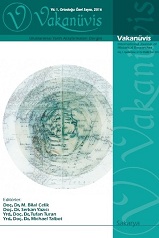Moğolların Meyyâfârikîn Kuşatması
Mongol Siege of Mayyafariqin
Author(s): Mert DemirSubject(s): Military history, 6th to 12th Centuries, 13th to 14th Centuries
Published by: Serkan YAZICI
Keywords: Mongols; Ayyubids; Mayyafariqin; al-Kamil; Yaşmut;
Summary/Abstract: Shortly after Genghis Khan's death, four big states were founded on the lands Mongolian Empire’s. One of them was the Ilkhanid State founded by Hülagü, with Tabriz its capital. Hülagü was assigned to the western part of the Empire by Mangu Han. He set out in 1253 to fulfill his mission. Putting an end to the rule of the Ismailis in 1256 and the Abbasid Caliphate in 1258, He later moved from Azerbaijan to conquer Syria and Egypt as his third mission. He commissioned his son Yaşmut to subjugate Ayyubid Ruler of Mayyafariqin, al-Kamil, who had sent troops to support the Abbasid Caliphate during the siege of Baghdad and refused to obey the Mongols. The Mongol army incluced Armenian and Georgian troops as well as Muslim allies like Bedreddîn Lulu. Yaşmut sent ambassador to al-Kamil to demand his surrender. Al-Kamil, who rejected the offer, started to defend the city of Mayyafariqin which had strong walls with his people. The city had to surrender due to hunger and thirst upon a siege that lasted about two years. After the city was takenover, itsdwellers wereslaughtered by the Mongols. With Hülagü’s order, al-Kamil was killed by torture, in which pieces of flesh torn from his body was forced into his mouth. After the severed head of al-Kamil was passed arround in big cities of Syria by the Mongols and their supporters as asign of victory, it was attached to the end of spear and displayed for a long time. Winning the Battle of Ain Jalut, the Mamluks buried his severed head in Damascus. Mayyafariqin, destroyed with the siege, could not pull itself together for a long time and remaining as a small city. The article aims to introduce how for the world of science Mayyafaqirin became the symbol of resistance against the Mongols.
Journal: Vakanüvis- Uluslararası Tarih Araştırmaları Dergisi
- Issue Year: 6/2021
- Issue No: 1
- Page Range: 381-406
- Page Count: 26
- Language: Turkish

